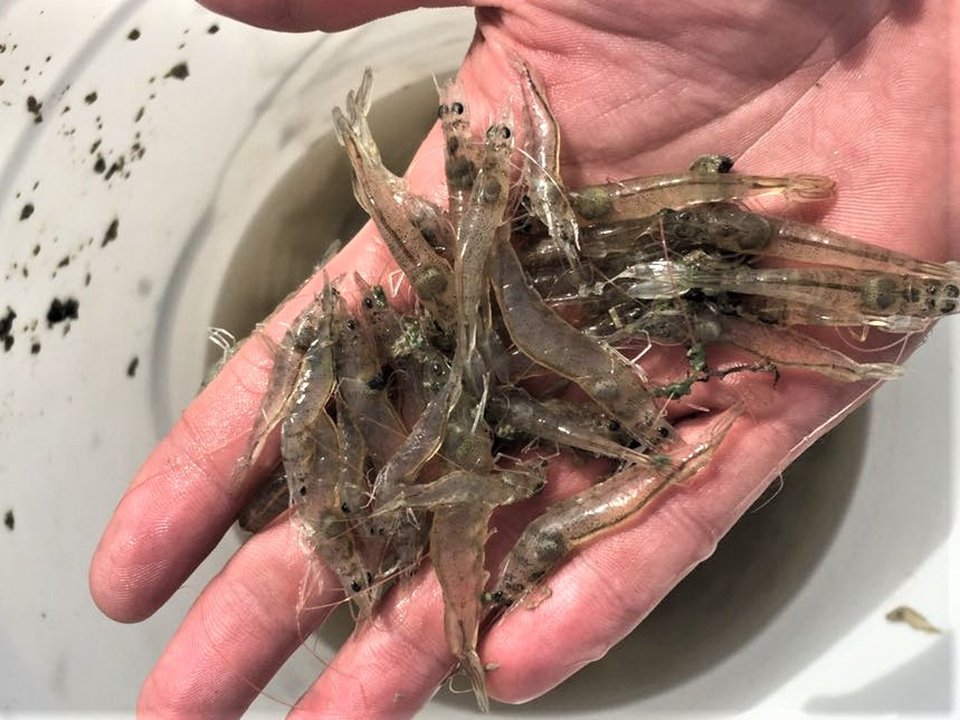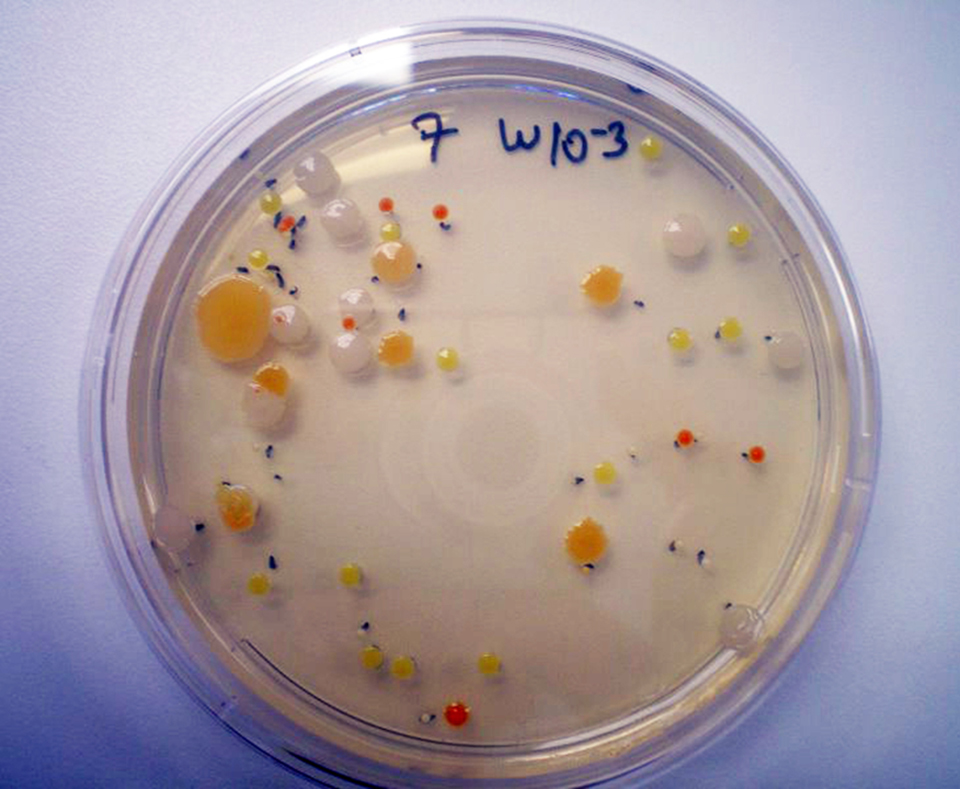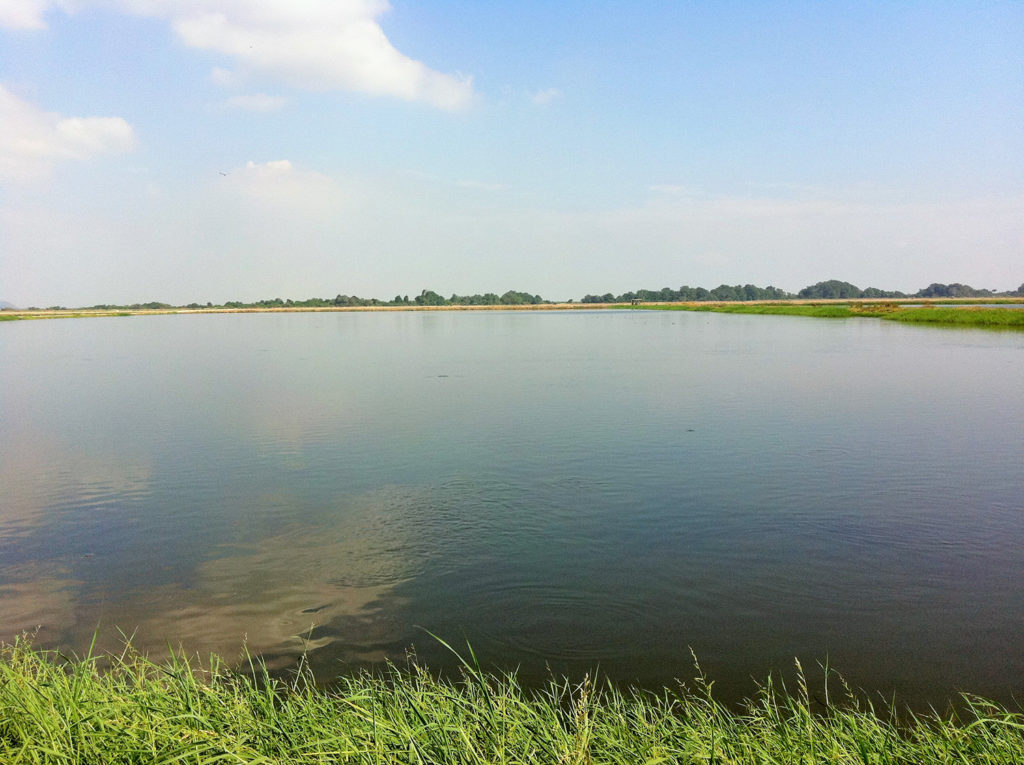Results showed that species can effectively adapt to some temperature variations

The Pacific white shrimp (Litopenaeus vannamei) – with its wide range of salinity tolerance, rapid growth and several other characteristics appropriate for intensive aquaculture – has become the most important cultured shrimp species globally. However, a variety of environmental factors can affect the growth of shrimp, such as changes in pH, salinity, dissolved oxygen (DO), temperature, and also chemical compounds like nitrite, ammonia and sulfide.
The annual cold wave that affects the shrimp farming industry in southern China during the winter months (November to January) causes significant economic losses to the L. vannamei aquaculture industry. However, little information is available regarding the physiological responses of the shrimp during the process of gradual temperature cooling and warming.
In shrimp, histology [the study of the microscopic anatomy of tissues and cells of animals and plants] of their hepatopancreas has been reported by researchers as a tool to monitor the impact of environmental stressors that can cause ultrastructural alterations at the onset of stress. For example, environmental stress like pH changes can cause change or damage of hepatopancreas cells. However, for temperature fluctuations, so far there is no definite information on any changes in hepatopancreas.
This article – adapted and summarized from the original publication (Wang, Z. et al. 2019. Physiological Responses of Pacific White Shrimp Litopenaeus vannamei to Temperature Fluctuation in Low-Salinity Water. Front. Physiol., 13 August 2019) – reports on a study that investigated several physiological responses in L. vannamei juveniles subjected to temperature fluctuations (28 to 13 to 28 degrees-C) in low salinity water.
Study setup
L. vannamei juveniles (average weight 5.4 ± 0.7 grams) from a commercial farm in Panyu (Guangdong, China) were transported to the lab and acclimated in filtered and aerated seawater tanks for several days before the experiment. During the acclimation stage, the water salinity and temperature in tanks were consistent with those of the farm culture ponds (salinity 5 ppt, pH 8.3 ± 0.1 and temperature 28 ± 1 degrees-C) where the shrimp were collected. The shrimp were fed commercial feed two times daily at 5 percent of their body weight.
Of these shrimp, selected, healthy individuals were randomly divided into three replicate tanks, and placed in an artificial climate incubator. The water temperature was decreased from acclimation temperature (AT, 28 degrees-C) to 13 degrees-C with a cooling rate of 7.5 degrees-C daily (2.5 degrees-C per 8 hours). After 13 degrees-C for 24 hours, the water temperature was increased back to 28 degrees-C at the same rate.
At various temperature points – 28, 23, 18, 13 and 13 degrees-C for 24 hours during the cooling process and at 18 and 28 degrees-C during the warming-back process – whole hepatopancreas from experimental animals were dissected and preserved for various analyses.
For detailed information on the experimental design and animal husbandry; collection and preservation of tissue samples; histology, RNA and DNA extractions, real-time polymerase chain reaction (qPCR) and other tests; and statistical analyses, refer to the original publication.
Results and discussion
In this study, we investigated various physiological responses – including hepatopancreas histological changes, plasma metabolites concentrations, the expression of various genes, and other processes – in L. vannamei juveniles exposed to water temperature fluctuations (28 to 13 to 28 degrees-C). All these responses and processes were affected as temperatures decreased, but generally recovered during the re-warming stage, and evidenced that L. vannamei shrimp can adapt to a certain level of temperature fluctuations.
The crustacean hepatopancreas is a vital organ involved in excretion, molting, diverse metabolic activities and storage of energy reserves. Results of our study showed that the number and volume of certain cells (B-cells) in the hepatopancreas tubules were significantly increased after the shrimp underwent cold stress. This may be related to the fact that B-cells are the main site of absorption and digestion of nutrients. It is possible that the high rate of synthesis and release of digestive enzymes in B-cells accelerated the mobilization of nutrients in hepatopancreas tubules, which would help the shrimp better adapt to the temperature stress.
In shrimp, the hepatopancreas is known to have a high self-repairing ability. For example, researchers have reported that L. vannamei can repair its hepatopancreas injuries after long-term exposure to low zinc levels and low pH. And that the weight of the hepatopancreas of L. vannamei significantly declined after fasting, but then increased immediately after animals began feeding again. In our study, histological damage of the hepatopancreas was reversed after the animals were returned to higher water temperatures, confirming this reported ability to self-repair.
Regarding changes in the shrimp plasma [liquid portion in shrimp blood, the hemolymph] during temperature fluctuations, our results showed that lipids and protein in L. vannamei plasma responded more rapidly to temperature fluctuation, while glucose levels remained stable before experimental water temperature reached 13 degrees-C, and recovered to acclimation levels after temperature increased back to 28 degrees-C.
The hepatopancreas is typically high in lipids and appears to be the main site for gluconeogenesis [a metabolic pathway that generates glucose from certain non-carbohydrate carbon substrates] in decapod crustaceans, those with five pairs of walking legs, like shrimp. Thus, combined with our observed hepatopancreas histology and plasma results, we conclude that the increase of B-cells in the hepatopancreas facilitates the gluconeogenesis to synthesize glucose from protein and lipid, through which shrimps supplied glucose demand under experimental cold stress. However, after the water temperature dropped to 13 degrees-C, the rupture of hepatopancreas tubules causes lipids and proteins to enter the hemolymph, resulting in an increase of lipid and protein content in plasma, and the glucose content decreased at the same time due to the damage to the hepatopancreas.
Nonspecific immunity plays an important role in the immune defense of aquatic animals. Shrimp like L. vannamei depend entirely on cellular and humoral immunity to prevent external injury. The enzyme Alkaline Phosphatase (ALT) is directly involved in several metabolic pathways and plays a significant role in the shrimp immune system against various pathogens, probably because it can help protect the hepatopancreas and hemolymph from cold-stress damage
The plasma metabolites concentration analysis also showed that the activity of the enzyme ALT reached its highest level at 13 degrees-C – the activity of ALT in plasma is inversely proportional to hepatopancreas health. This finding is consistent with previous studies and confirms the self-repair ability of L. vannamei shrimp. In addition, the expressions of many genes we assessed in our study, as well as hemocyte [type of cell involved in invertebrate immune system] numbers, reached their highest level in the hepatopancreas at 13 degrees-C.
Perspectives
Results of our study showed that proteins and lipids were the main energy source of L. vannamei during temperature fluctuations. During the re-warming stage, all histopathological symptoms assessed generally reversed and all plasma metabolite concentrations and gene expressions returned to acclimation temperature levels. Overall, results suggest that L. vannamei can adapt to a certain level of temperature fluctuation, but the detailed adaptation mechanism in this species of shrimp still needs further study.
References available from the original publication.
Now that you've reached the end of the article ...
… please consider supporting GSA’s mission to advance responsible seafood practices through education, advocacy and third-party assurances. The Advocate aims to document the evolution of responsible seafood practices and share the expansive knowledge of our vast network of contributors.
By becoming a Global Seafood Alliance member, you’re ensuring that all of the pre-competitive work we do through member benefits, resources and events can continue. Individual membership costs just $50 a year.
Not a GSA member? Join us.
Authors
-
Zhenlu Wang, Ph.D.
Department of Aquaculture, College of Marine Sciences, South China Agricultural University, Guangzhou, China; and Joint Laboratory of Guangdong Province and Hong Kong Region on Marine Bioresource Conservation and Exploitation, South China Agricultural University, Guangzhou, China
-
Yuexin Qu, Ph.D.
Department of Aquaculture, College of Marine Sciences, South China Agricultural University, Guangzhou, China; and Joint Laboratory of Guangdong Province and Hong Kong Region on Marine Bioresource Conservation and Exploitation, South China Agricultural University, Guangzhou, China
-
Muting Yan, Ph.D.
Department of Aquaculture, College of Marine Sciences, South China Agricultural University, Guangzhou, China; and Joint Laboratory of Guangdong Province and Hong Kong Region on Marine Bioresource Conservation and Exploitation, South China Agricultural University, Guangzhou, China
-
Junyi Li, Ph.D.
Department of Aquaculture, College of Marine Sciences, South China Agricultural University, Guangzhou, China; and Joint Laboratory of Guangdong Province and Hong Kong Region on Marine Bioresource Conservation and Exploitation, South China Agricultural University, Guangzhou, China
-
Jixing Zou, Ph.D.
Department of Aquaculture, College of Marine Sciences, South China Agricultural University, Guangzhou, China; and Joint Laboratory of Guangdong Province and Hong Kong Region on Marine Bioresource Conservation and Exploitation, South China Agricultural University, Guangzhou, China
-
Lanfen Fan, Ph.D.
Corresponding author
Department of Aquaculture, College of Marine Sciences, South China Agricultural University, Guangzhou, China; and Joint Laboratory of Guangdong Province and Hong Kong Region on Marine Bioresource Conservation and Exploitation, South China Agricultural University, Guangzhou, China[110,99,46,117,100,101,46,117,97,99,115,64,110,101,102,110,97,108,110,97,102]
Tagged With
Related Posts

Health & Welfare
Probiotics, prebiotics in aquatic animals
Research has shown that probiotics and prebiotics can help mediate stress responses and improve disease resistance, growth performance, feed utilization, carcass composition and other traits by stimulating animals’ innate immune systems.

Health & Welfare
Phytogenics help improve performance in aquatic species
Phytogenics comprise a class of plant-derived feed additives that improve animal performance. They have been shown to exert multiple positive effects in fish and shrimp, including improvement of feeding efficiency and digestion, reduction of nitrogen excretion and improvement of gut flora and health.

Health & Welfare
Ammonia toxicity degrades animal health, growth
Ammonia nitrogen occurs in aquaculture systems as a waste product of protein metabolism by aquatic animals and degradation of organic matter, or in nitrogen fertilizers. Exposure can reduce growth and increase susceptibility to diseases in aquatic species.

Responsibility
Constantly changing pH unavoidable, completely normal
Prof. Claude Boyd discusses the importance of pH for farmed fish and shellfish, the normal and natural fluctuations and how aquaculture systems can manage it.


